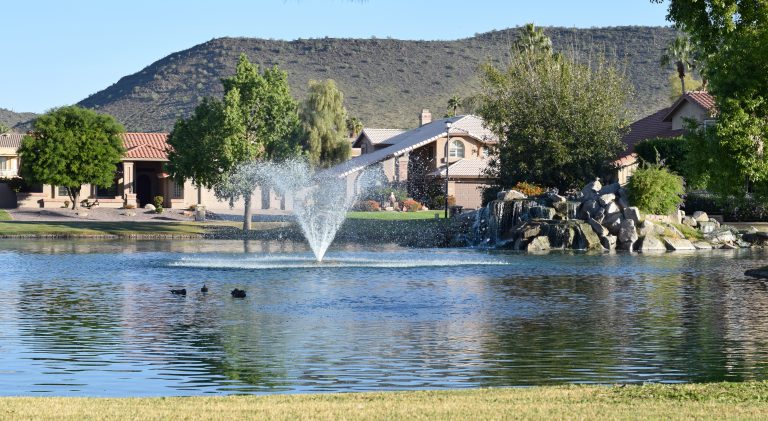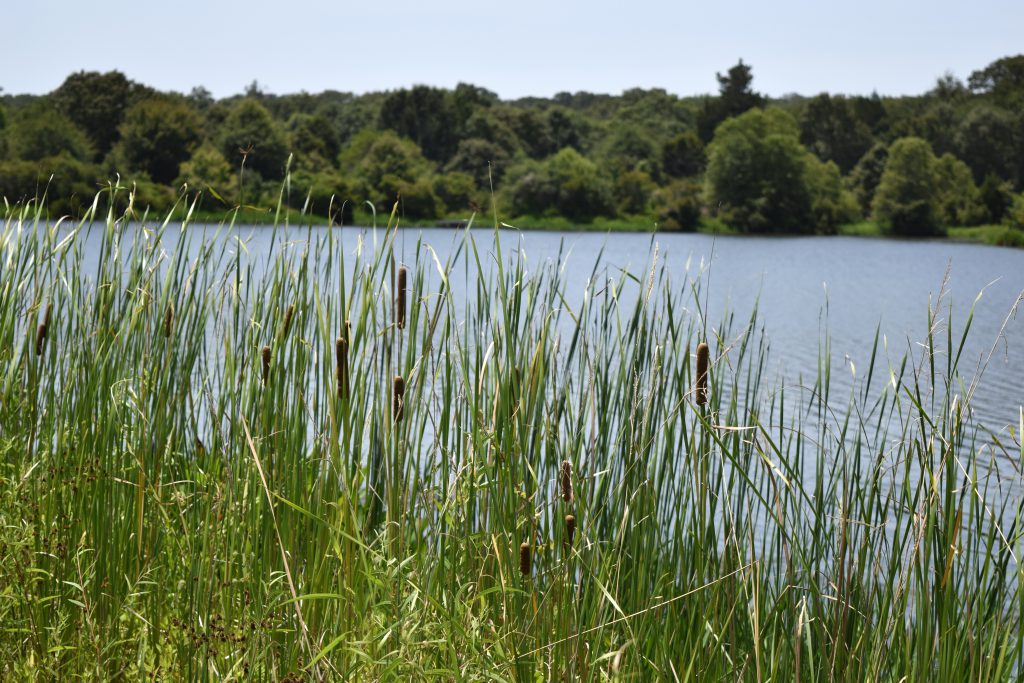

Many species that were once iconic elements of American wildlife, like Bobwhite Quail and Monarch Butterflies, have been declining in recent years due mainly to loss of habitat. The expansion of residential and commercial land use into previously rural and agricultural areas has fragmented the landscapes that many species rely on for food, shelter, and migration. At the same time, other species like Beavers, Muskrats, Raccoons, and resident Canada Geese have adapted to thrive in this type of human-dominated landscape, often in ways that negatively impact people and, in some cases, to the detriment of other wildlife.
Establish A Vegetative Shoreline Buffer to Welcome Native Wildlife
We all want to be good stewards of the environment, and one aspect of that is providing habitat for the wildlife that can safely and sustainably live alongside us in our neighborhoods. Achieving this without encouraging those species that can jeopardize the safety of our property and the integrity of our local ecosystems requires a carefully balanced approach to habitat management.
Establishing beneficial native vegetation around your pond is a great way to provide habitat for native insects, amphibians, and songbirds. If you look around at the landscaping in most neighborhoods, you’ll see that most of the ornamental plants are species not originally from this continent. As a result, our native insects are not adapted to eat them. Our songbirds rely on insects to feed their young during the spring and summer, so with fewer insects we also have fewer birds. Because establishing a beneficial vegetative buffer around a pond is already an excellent practice for improving water quality and discouraging geese, it only makes sense to dedicate this area to native plants and give a boost to desirable wildlife.

Watch Out for Wildlife That Cause Issues In Lakes
There are also a few things you will want to do in order to discourage wildlife that can cause problems. For instance, cattails are like a big neon sign that says “Welcome Muskrats!” Muskrats use the succulent vegetation both as a food source and to build their dome-shaped houses, and the large potato-like root of the cattail is a major food source for muskrats over the winter. Muskrats are tenacious and highly abundant throughout their range, so any pond may experience damage from muskrat burrowing from time to time, but keeping cattails from becoming established can help to keep their interest in your waterbody to a minimum.
Are Beavers Harmful to Have In Your Pond?
Beavers, on the other hand, eat mostly tree bark and use sticks and logs to construct their dams and lodges. While they will slide down trees from upland areas to the water, their preferred settlement areas are bodies of water with hardwood trees and saplings close to the shoreline. This is one reason it is not advisable to have trees and woody vegetation near the shore of your pond. Treating and removing willow saplings and other woody stems from around the pond is the best way to discourage beavers from moving in. If you have established trees near the water that you would like to protect from beavers, a mixture of sand and exterior latex paint (20 ounces of playground sand to 1 gallon of paint) applied to the lower 4 feet of the tree trunk and exposed roots will make them less palatable to hungry beavers, while still allowing the tree to grow and breathe normally.
If beavers do start damming up your pond’s outflow, frequent clearing away of their construction efforts is the best way to encourage them to move elsewhere, but they can be exceptionally stubborn and trapping the offending animals may be required. The same is true of muskrats, and for this reason maintaining habitat that is less appealing to nuisance species isn’t just good for us, it’s safer for the animals themselves.
Create Habitat for Beneficial Wildlife
In addition to maintaining the right combination of vegetation, structural elements of your environment are important for wildlife as well. Nest boxes for appropriate species of birds are one obvious example. Floating or partially submerged logs provide fish structure as well as basking habitat for turtles. If you have a large enough body of water or live near a river or the ocean, you might even consider erecting a nesting platform for osprey.
If you do decide to modify your habitat for the benefit of wildlife, a number of wildlife advocacy organizations like the National Wildlife Federation and some chapters of the Audubon Society offer habitat certification programs, which are a great way to show your commitment to giving nature a place in your landscape. However you decide to promote wildlife habitat in your neighborhood, make sure you take time to enjoy observing your local wildlife with your friends and family.









